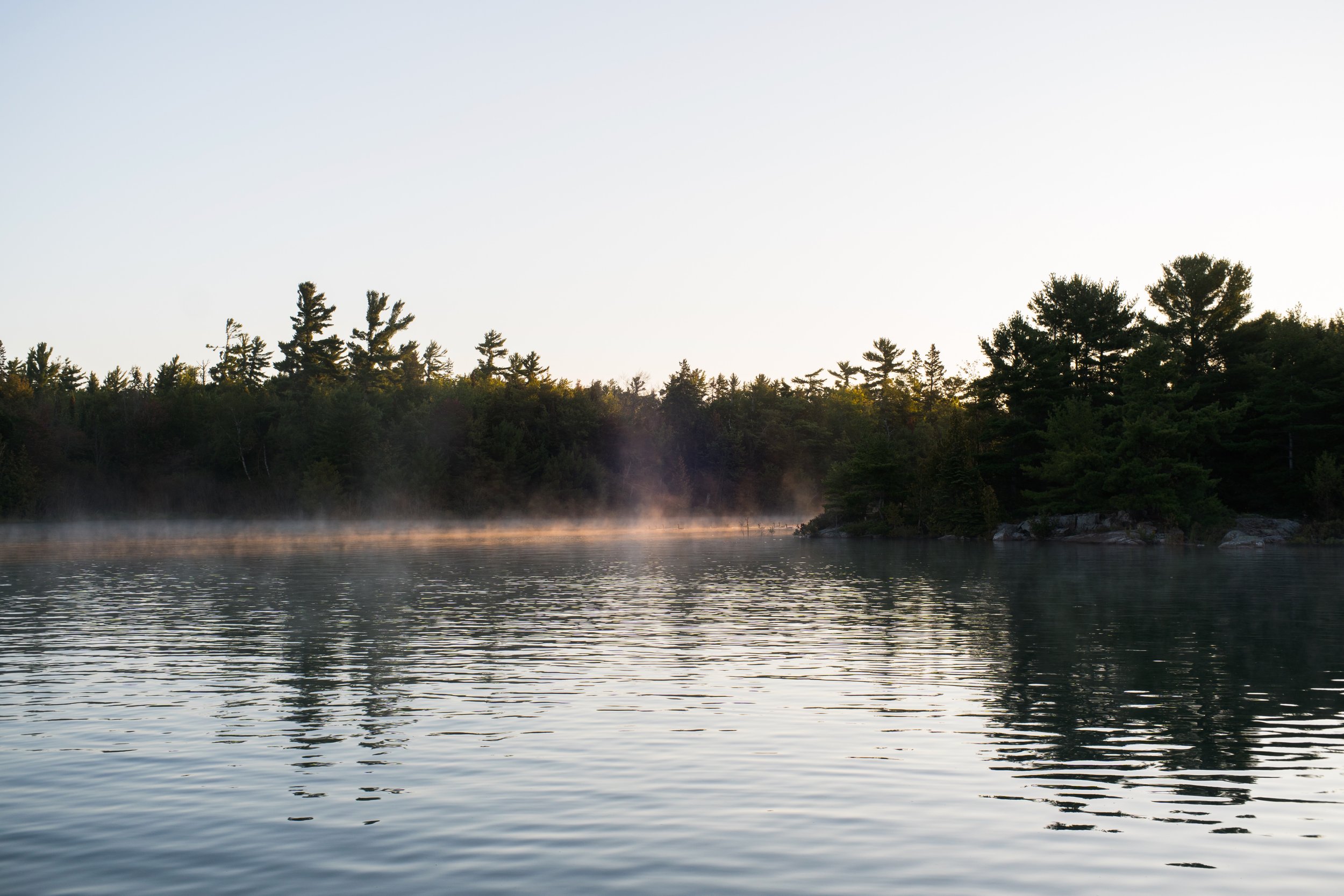The Great Lakes
I grew up tracing the shape of the Great Lakes by boat and by foot.
Each summer, we’d head north—crossing the flat, lake-dotted stretches of the upper Midwest to return to a family cabin tucked in a cove between Lake Superior and Lake Huron. It’s the kind of place that feels like the center of everything. From the dock, I could drift to Duluth, Chicago, Cleveland, Buffalo. Keep going, and the water would carry me out through the St. Lawrence and into the Atlantic.
The Great Lakes are a glacial-fed inland sea, linking towns, cities, and entire histories—holding nearly a quarter of the planet’s surface freshwater. These waters raised me. I spent long days learning their rhythms—watching clouds shift with the wind, tying knots, catching frogs, floating on my back while the sky painted itself new every few minutes.
When I wasn’t up north, I was on the South Side of Chicago. But the lake was still close. After football practice, I’d pack my mom’s minivan with whoever could fit and head to the dunes to try and catch the sunset. Lacey knew a spot with free parking. We’d walk the sand barefoot, stare out past the dunegrass at that wide blue horizon. You could catch the peaks of the Chicago skyline if the sky was clear. And I remember thinking—the water touching my feet was the same water wrapping around the rock up north. It made the whole thing feel alive, like one big body.
I didn’t know it then, but I was learning to read the landscape. The Great Lakes aren’t a backdrop. They’re a living system—a basin of interrelated biospheres, shifting coastlines, and quiet knowledge. Wetlands, boreal forest, reef, dune, cove. You don’t just pass through it. You’re shaped by it.
As I’ve gotten older, I’ve come to see what makes this region worth protecting isn’t just the beauty—it’s the balance. So much of the energy we depend on—biologically, emotionally, economically—flows from the health of this place. You can’t separate the shoreline from the human systems it supports. Healthy water. Healthy coasts. Healthy people.
This is why we save the dunes. Not just as an act of defense against the wrecking ball of industrialization—that fight, in many ways, has already passed—but as a quiet investment in the future. The health of this coastline is a vote for the health of what’s to come. Our children's well-being is entangled with the vibrancy of this ecosystem. And for that, I can think of no better place to land our time, our attention, and our resources.
What you find in the quiet pockets along these shores isn’t just stillness. It’s a kind of clarity. Something in us reorients when we’re near these waters—something primal, maybe. Something that remembers.
So yes, this is where I’m from. But it’s not just a point of origin. It’s a rhythm I still carry. A responsibility I’ll carry, too. Because what’s at stake isn’t just scenery—it’s continuity. I want to keep returning to these waters throughout my life, and I want my kids—and their kids, and theirs—to feel the same grounding I’ve felt. To know this place not as a backdrop, but as a foundation. Something to go from. Something to return to. Even if I lose everything else, I can come back to these waters and, in their stillness, find myself again.








